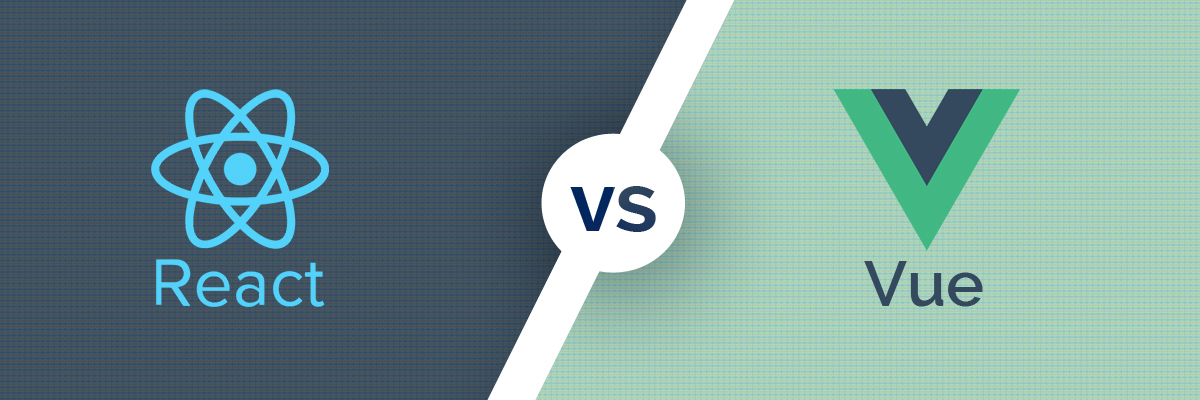Selection of a suitable framework plays a vital role in redesigning a front-end infrastructure. For the welfare of the business, one needs to select the best front-end framework to redesign the products on the top. For the same, two entities that deals with framework management are React and Vue.
Let’s have some points for the comparison of both the entities:
About
Vue.js is an open source JavaScript framework launched in February 2014 that is used for building extensive user interfaces and single page application. On the other hand, React is a JavaScript library released in March 2013 that is used for building attractive user interfaces. It is maintained by Facebook, a community of developers and other companies. It can also be used as a base in mobile or development of single page applications.
Learning Curve
Talking about the learning curve of both the frameworks, React provides official documentation with a couple of getting started guides that are written in exceptionally well mannered and also deliver a decent walk-through to the beginners. As far as the core principle is concerned, it is just a matter of few hours with the help of developers who are confident in front-end framework experience. The documentation of React is acceptable up to the particular extent but it is not as clear as that of Vue. Inching towards the opponent, it contains necessary happy flows and many more, but there are still many edges which are missing from the documentation. These edges may results in loss of Vue because such type of edge converts into the pain points as the project gets bigger.
Code Style
React provides various concepts based on functional programming that helps in the improvement of UI-first application, some of the notable points for React are:
- JSX:
A way of writing HTML within JavaScript code, it comes as a complement to React with a strong promotion of functional programming that makes the excellence sense in such a scope.
- Component lifecycle:
It offers a perfect way of hooking to specific events in the “life” of creation or updates as its components.
On the other side, being a younger framework than React and Angular, Vue took some positive points of React and that of Angular too that turns it into the mix of both functional and object-oriented programming. Vue coding style is much similar to that Angular but also filters most of the Angular’s pain points. It doesn’t force the one to change the code style as it separates HTML, JS and CSS, like web developers have been used to for years, rather it allows the use of JSX if preferred.
Performance
Comparison of both on the basis of performance is a bit harder to measure because it depends on the type of app you are building, or on the manner how the one is building it. On comparing the DOM manipulations, the overall performance of React is an acceptable but little bit slower when compared with Vue. It also delivers support for server-side rendering (SSR) out of the box and can be a useful hand for many types of implementations. Coming to the Vue, it is not only the fastest one but also a progressive framework. The core library mainly focused on view layer and can smoothly integrate with other libraries or the existing projects.
Flexibility
React mainly focuses on UI, so the most prioritized thing that one requires is its support for building user-facing components. It does not offer more advanced features like state management, so for the same React applications use Redux for handling the state management. On the other hand, Vue as a progressive framework allows a fundamental feature to build an app, but if required, it also offers most of the things out of the box such as:
- Vuex for state management.
- Vue router for app URL management.
- Vue server side Renderer for server side rendering.
Tooling
Talking about the tools, react delivers third-party CLI tool termed as react-app, helps components in a React project and scaffold apps. These types of CLI tools also support the ability to run end to end and unit tests, a local development server and code linting. On the other side, the official CLI tool of Vue is Vue CLI, it is similar to React’s create react-app and also offers scaffold of new apps with support for all significant IDEs.
Mobile
Talking about React Native which is used for building Native Mobile Applications, at present it is the current leader of “write once, use anywhere (either in native iOS and Android). Inching towards the opponent, there are many options to go with for building Mobile Native apps. Unlike to that of React Native, there’s no main leader in Vue-Mobile-Native space.
Maturity
React was released in March 2013, according to the record of SimilarTech React is in use on 205,000 unique domains which are growing at a rate of 2.46% per month. It has built a vast community with very well tested on production as compared to that of Vue. Coming to the opponent, Vue was launched on February 2014 and is in use on 26,000 unique domains which are growing at a rate of 3.34% per month. Vue is widely used in many bigger names like Gitlab, Alibaba, Baidu etc. One of the most important factors for the priority of Vue is stabling of both at runtime and at the time of updates.
On Understanding both the rivalries, we have found that React is a trendsetter and a highly demanded skill in the industry. Being a clear leader of both Industry hype and community appreciation it is extensively popular and deserves the status very well. While on the other hand Vue is a learner which is straightforward and a fresh framework that deserves the place at the topmost position for being super simple to learn. Overall both have certain features and qualities based on the particular scenario so, no one can be declared as the better than the other.



Add a Comment
You must be logged in to post a comment